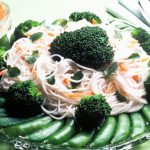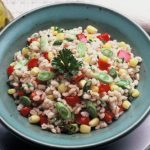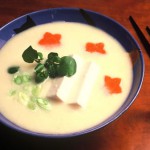Mitoku’s miso range, made with highest quality organic ingredients, represents the finest of this traditional seasoning and health food. Miso is integral to authentic Japanese cooking thanks to its bold umami and great versatility. Its rich, complex flavor depends on the fermentation processes that are fundamental to traditional production. This is what sets our miso apart from quickly fermented, mass-produced products.
Fermentation develops the aroma, flavor, and color of miso, and also imparts high nutritional value. Furthermore, miso (especially unpasteurized miso) contains active enzymes which aid digestion and support immune system health. As with all our products, Mitoku’s organic miso range is free from GMO and chemical additives.
-
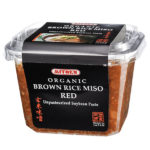
Organic Brown Rice Miso Red – Unpasteurised
This full-bodied and wholesome miso contains a deliciously satisfying balance of flavors. Mitoku’s brown rice miso is made using rice with its bran intact, meaning it is packed with dietary fiber, minerals, vitamins, and essential fatty acids. In addition, the unpasteurized form of this miso is loaded with beneficial enzymes. This is a great all-purpose miso that works particularly well in soups.
*Also available pasteurized.
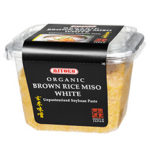
Organic Brown Rice Miso White – Unpasteurised
An unpasteurized miso, made with organic brown rice koji, Mitoku Brown Rice Miso White is distinctively light in color but rich in taste with pronounced saltiness. It is slightly sweeter than the red variety. Switching from a dark to a light miso can transform the taste and impact of a dish.
*Also available pasteurized.
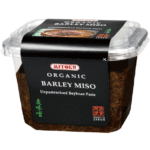
Organic Barley Miso – Unpasteurised
This miso, known traditionally as “rural miso”, is characterized by its hearty and warming flavor, and is a great choice for soups, stews, and sauces. It is also distinguished by its barley aroma, derived from barley koji. Each product in our barley miso range has its own distinct color and flavor.
*Also available pasteurized.
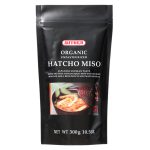
Organic Hatcho Miso – Unpasteurised
Naturally fermented for two summers and two winters in 200-year-old cedar casks under the pressure of three tons of river rocks, Hatcho miso is the richest and heartiest miso variety. It has a distinctive astringent flavor and deep color, is very rich in protein and has mellow saltiness on the palate. Named “Hatcho” after the town in which it is produced, it is now made under the direction of the family firm’s 19th successive president to a recipe unchanged since 1645.
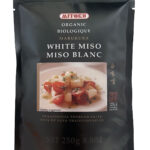
Organic Sweet White Miso
This light and sweet Kyoto-style miso is made in small batches, with a high ratio of rice koji to soybeans and a short fermentation process. Creamy and versatile, with a distinctive pale-yellow color, it is ideal as a dairy substitute and works well in dips, creamy sauces, desserts, and even baking.
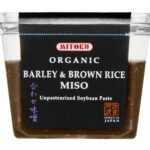
Organic Barley & Brown Rice
This well-balanced miso is a Kyushu specialty, made by combining barley koji with brown rice koji. With its appetizing blend of hearty umami from the barley koji and the refreshing, mellow sweetness supplied by the brown rice koji, this delicious unpasteurized miso is a great addition to any home cook’s pantry.
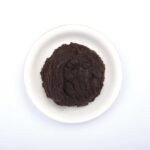
Organic Akadashi Miso
The distinctively hearty taste of traditional soybean miso works best when combined with other ingredients. Mitoku’s Organic Akadashi Miso adds the refreshing sweetness of rice miso and malt into the mix, creating a richly satisfying, savory blend that can be used to deepen the flavor of miso soups, stews, and other dishes.Show more...
Koji: The Engine of Fermentation
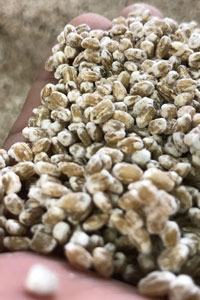
Fermentation lies at the heart of Japanese cuisine — and many of Mitoku’s most popular products. Perhaps the most vital element in the production of these foods is koji, to the extent that it has been named Japan’s kokkin or “national fungus”. Ask any brewer of soy sauce, miso, rice vinegar, or a host of other traditional Japanese staples, and they will tell you that good koji is a key part of their product. But what exactly is koji?
Koji is a fermentation starter made with the fungal culture Aspergillus oryzae. This culture is added to steamed grains (generally rice or soybeans), where it grows rapidly. During this incubation period, the koji becomes rich in enzymes, which are then used to break down the raw ingredients and drive the critical fermentation process. In this way, koji plays the role of nature’s chef, imparting fermented foods with their distinctive taste, complexity, and aroma.Show more...
Salt and Miso
Salt is a vital part of the fermentation process. Its addition to the miso mixture halts the propagation of the Aspergillus oryzae, while simultaneously creating an environment that allows healthy, probiotic bacteria to thrive, kick-starting the decomposition process while keeping harmful bacteria at bay.Show more...

Miso is made by mixing koji, mashed soybeans, salt, and water, then leaving the mixture to ferment and mature. Different types of miso can be made by adding different types of koji to the mixture. Brown rice koji is used to make brown rice miso, barley koji for barley miso, and soybean koji for soybean miso. There are many variables that go into shaping the taste of miso, ranging from the area of production – its environment and traditions – to the production techniques and ingredients favored by an individual producer. Here we introduce the basics of miso production.
Preparation and koji-making
As with sake and shoyu, the most critical element in miso-making is the fermentation starter, known as koji. This kick-starts the all-important fermentation process. The quality of the starter does much to determine the quality of the finished miso. It is not enough to simply sprinkle rice, barley, or soybeans with koji spores. Instead, the koji needs to be provided with an effective medium to grow on. If soybeans are used, for example, they must be washed, soaked, and steamed to create the optimal conditions for the koji to thrive. The producer must also be attuned to environmental conditions such as temperature and humidity in order to judge the correct ratio of koji to soybeans. These factors have a complex interrelationship, which can affect the flavor of each batch.
The following photos illustrate the koji-making process for barley koji. Koji spores (Aspergillus oryzae) are sprinkled on steamed barley in a warm incubation chamber. Inside the chamber, the steamed barley is transformed into koji and becomes ready for miso making.
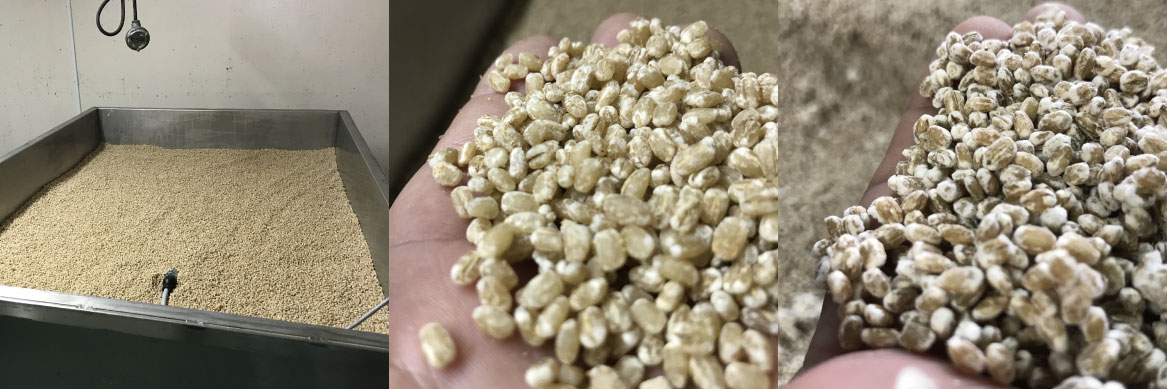
Fermentation and maturation
The koji is now mixed with cooked soybeans, salt, and water in large fermentation vats. While most miso makers use metal vats, some traditional producers use wood, which provides the perfect environment for microorganisms to propagate and for the koji enzymes to get to work breaking down the soybeans. The mixture is then left to ferment and mature. For the first 20-30 days, the mixture is churned to give a boost to the beneficial microorganisms and ensure that the mixture ferments evenly. After fermentation, the maturation period can be anywhere from three months to three years, depending on the miso variety.
From sweet, creamy, and light to hearty, robust, and dark, Mitoku has an wide range of miso varieties available to stimulate and enhance your cooking.
The key to fine miso cookery is not to overpower dishes with a strong miso taste, but to integrate the more subtle aspects of miso color and flavor in a gentle balance with other ingredients. For example, when making miso soup, the use of a kombu, shiitake, kombu-bonito, or vegetable stock helps achieve a full, rich flavor with considerably less miso than you would need if you boil vegetables in plain water and rely on miso to supply all the flavor. The latter method usually results in either an overly salty soup or one that is watery, bland, and unappetizing.
With respect to color, bright summer vegetables, such as sweet corn or yellow squash, and lightly cooked greens floating in the beautiful yellow to beige broth of a light miso soup are pleasant in warm weather, whereas during the colder months the earthy tones and hearty flavor of dark miso soup with chunky root vegetables and wakame or kale are more appealing.Show more...
Related Recipes
-
Festive Noodle Salad
-
Barley-Corn Confetti
-
French Onion Dip
-
Amazake Salad Dressing
-
Stuffed Endive Leaves
-
Sesame Ginger Miso Dressing
-
Dairy-Free “Macaroni and Cheese”
-
Kyoto Style Soup
-
Carrot Curry Soup
-
Split Pea Soup
-
Pecan Miso Dip
-
Teriyaki Grilled Seasonal Vegetables
-
Udon in Sesame-Miso Broth
-
Pasta and Bean Salad with Pickled Ginger
-
Shrimp Japonais
-
Vegetable Barley Stew
-
Lemon-Tahini Dressing
-
Noodles with Miso Tahini Sauce
-
Japanese Style Fried Noodles
-
Green Beans Amandine
-
Squash “Pie” with Sweet and Savory Onion Topping
-
Mochi Soup (O-zoni)
-
Miso Soup with Maitake
-
Miso Soup with Shiitake
-
Daikon Miso Soup
-
Sesame-Miso Spread
-
Wakame Miso Soup
-
Bean Soup
-
Tofu Sesame Dressing
-
Fat-Free Shiitake Sauce
-
Orange Roughy with Citrus Vinaigrette
-
Miso Rice Pilaf



